
03.11.2016
by Sandra Sánchez, Monterrey, Nuevo León, Mexico
October 13, 2016 – January 22, 2017
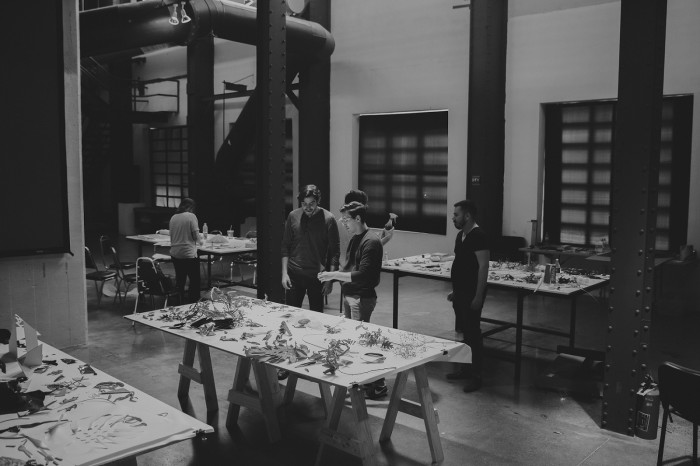
Competition and curation: The Twelfth FEMSA Biennial
The Fomento Económico Mexicano, more often known by its acronym FEMSA, is a multinational corporation headquartered in Monterrey (Nuevo León, Mexico). It is the world’s largest publicly-held bottler of Coca-Cola products, in terms of volume; the second largest shareholder at Heineken beer, and also operates Mexico’s ubiquitous OXXO convenience stores. The company —in business since 1890— professes five “development paths”: “ongoing innovation, efficient performance, solid growth, respect for the environment and both company-personnel as well as community-based development” [1]. The FEMSA Biennial, focused on contemporary art, forms part of a “culture” section that is in turn a part of that last development path.
The Biennial is an event established in 1992 that seeks to recognize, strengthen, stimulate and build awareness about the Mexican creative arts. Its protocols include an open call in which artists from anywhere in the nation can submit two- and three-dimensional artworks to be evaluated by a rotating jury. It awards two 200,000-pesos acquisition prizes. Monterrey’s Alliance Française and France’s Saint-Étienne Superior School of the Arts additionally award a cultural residency to two artists the jury recognizes with honorable mentions. The prize-winning artworks are exhibited at the Centro de las Artes in Monterrey’s Parque Fundidora; they have been also been shown in the past at the Museo de Monterrey, the Museo de Arte Contemporáneo de Monterrey (MARCO) and at Mexico City’s Antiguo Colegio de San Ildefonso museum.
The pieces the Biennial acquires are added to the Colección FEMSA, which now includes more than 1200 modern and contemporary Latin American artworks. Beyond the artworks’ loci of production, the collection seems to lack clear criteria regarding the pieces it acquires. A review of winning artworks makes it hard to discover any unifying thread that would offer a clue to the collection’s interests as regards anything more than geography.
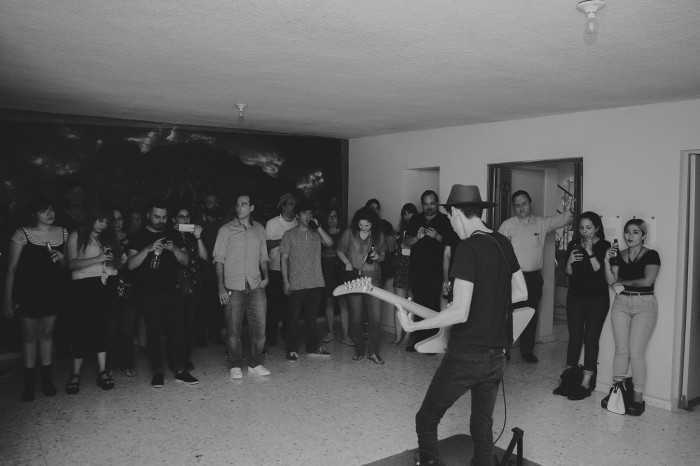
What makes the Biennial a contest and not a mere sales transaction is the jury. This year’s twelfth-edition winners were announced on Thursday 13 October. Visual artists Pierre-Olivier Arnaud and Iñaki Bonillas, curators José Roca and Gonzalo Ortega, and art historian Carmen Cuenca comprised the jury. When questioned about selection criteria at a press conference, Cuenca declared there was no other than the artworks themselves; she added that the Honorable Mentions might have been granted in the form of acquisition prizes, though without clarifying the reasons why.
In contrast to the murky criteria for selecting the forty-two pieces by twenty-nine artists that were exhibited at the Centro de las Artes in Monterrey’s Parque Fundidora, the corporation’s intentions are crystal clear. At the exhibition opening, Genaro Borrego Estrada, General Director of Corporate Affairs, emphasized FEMSA’s interest in being ever-more-closely connected to society in general and to the communities in which it does business (i.e., Mexico and Latin America), regions where it also focuses on its art acquisitions. He mentioned participation of artists from all Mexico’s states for this twelfth edition; they submitted a total of 3451 artworks. He also thanked the jury for its support since it has allowed the event to be recognized as one of Mexico’s most important visual arts competitions.
According to Borrego, awarding and acquiring two artworks for the collection is a way to advance quality-of-life in local communities. “With this important effort, we re-state our commitment to contributing to the overall development of people in communities where we do business by driving education and culture. At FEMSA we’re convinced that to the degree we help promote culture, artists, and their work in every community, we’re also driving quality-of-life in our communities.”
It’s undeniably odd to think acquiring two artworks at 200,000 pesos each (a little more than 11,000 US dollars at this writing) and dedicating a maximum of that amount for the purchase of other pieces could be a way to stimulate quality-of-life in the average community, given that the direct economic beneficiaries are just a handful of individuals. The money and effort that each competing artist invests in producing the works gets clouded over and becomes little more than an entry stat —1259 artists handed in 3461 pieces.
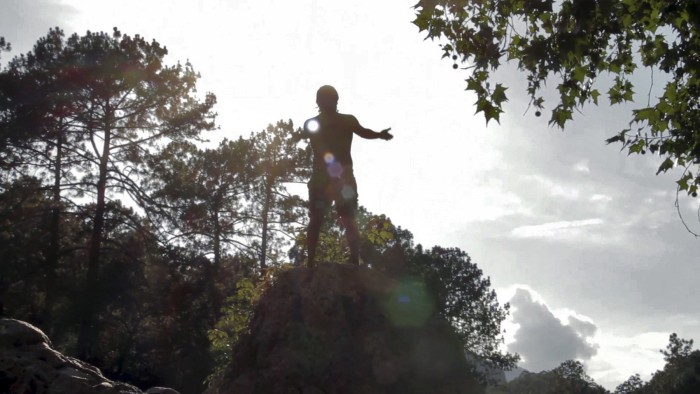
What’s more, the relevance of the selected artists’ work is overshadowed by the “ta-dah!” moment that reveals who won 200,000 pesos. This year, prizes went to Raúl Quintanilla Alvarado’s Canon del cielo, from the series entitled El Cine de las mutaciones (2016) as well as to David A. Hernández Valdés’s Modelado cuerpo vs. cuerpo (2015), in the two- and three-dimensional formats respectively. Honorable Mentions went to Tania Ximena for 79 NORTH (2014; two-dimensional) and to Karla Leyva’s De la serie Lost/Found in Translation (2016; three-dimensional).
Despite the jury’s refusal to shed light on its selection criteria —beyond personal tastes, at least— it’s clear all the prize-winning artworks relate to video and photography. Canon del cielo is an 8-minute-13-second video that presents 386 two-and-one-half-minute short films from 2012. For the Biennial submission, the artist chose those films that best interpreted each of the lines in hexagrams from the I Ching. Modelado cuerpo vs. cuerpo is also a video —lasting 11 minutes and 42 seconds— in which the artist confronts a horizontal wood block made based on his height and the width of his back.
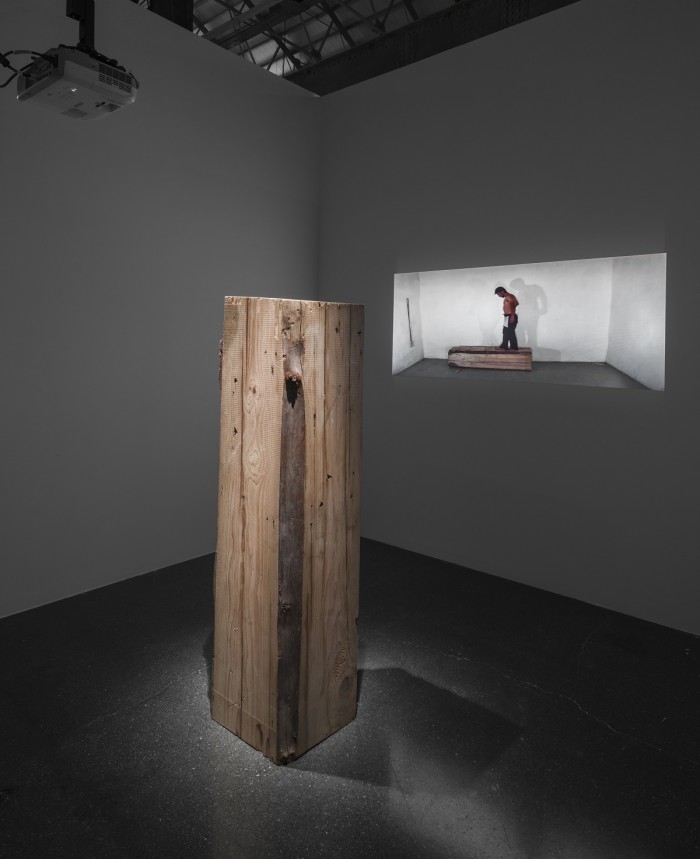

79 NORTH is a 5-minute-15-second video whose protagonist is Aleksandr Romanovskiy, one of five inhabitants of Pyramiden, an international zone administered by the Norwegian government that once served as a model for a utopian communist system. Romanovskiy is a tour guide there, who arrived after losing his job as a geography teacher when he disappeared for several months because a girlfriend cheated on him.
Lost / Found in Translation is an artwork that incorporates a series of postcards and a stage set made of bond-paper, lit with a 500-watt lamp. A color change on the postcards’ surface is observed, going from orange to yellow. The same degradation does not appear on the bond paper; it can only be reproduced when photographed. With her artwork, Leyva reminds us the camera is a machine that has its limits, because of which it is impossible, even in optimal lighting conditions, for images to be reproduced as they are perceived by the human eye. As “objective” as it may be, photography is a medium of resemblances and not mimesis.
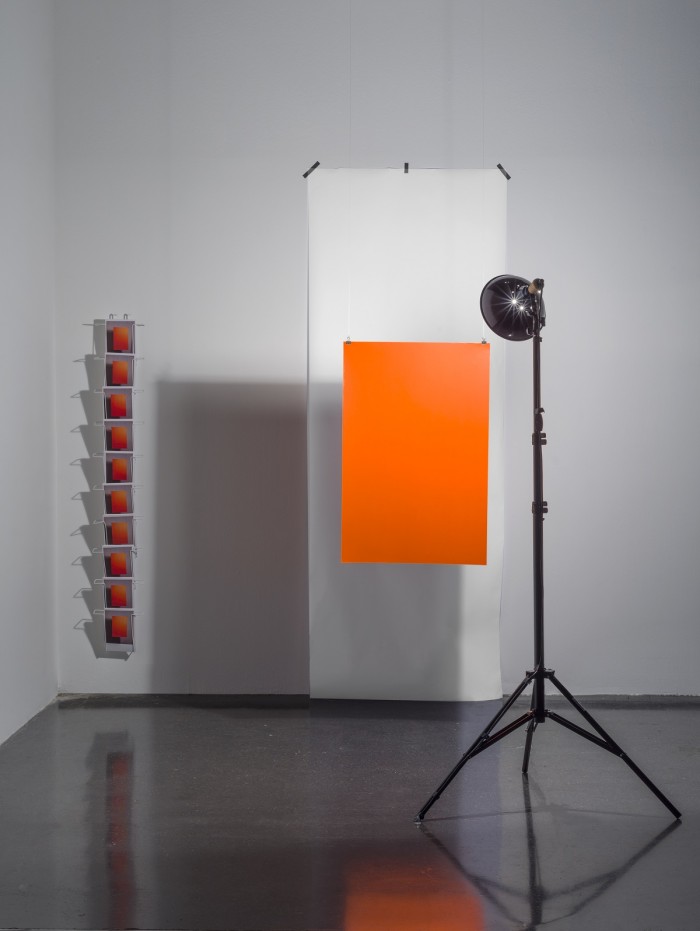
The fact the jury has awarded prizes to video- and photography-related artworks can be interpreted as a critical commentary on the Biennial’s fundamental principles, which invite participation from artists who work in two- and three-dimensional formats, leaving aside practices that do not necessarily produce objects. On the other hand, the jury is also driving the acquisition/collection of video art, a less popular pursuit that is gradually gaining ground in Mexico. Notably, two of the four winning artists were from FEMSA’s home state of Nuevo León.
A point of separation between the Twelfth Biennial and previous editions is the curatorial project that has been implemented as an alternative initiative to the contest. Poéticas del decrecimiento. ¿Cómo vivir mejor con menos? (“The Poetics of De-Growth: How to Live Better with Less?”) is the title curator Willy Kautz established to launch a project that involved renting a house for a year in Monterrey’s Obispado neighborhood. He invited Leo Marz to serve as local curator and together they set up a work program wherein they invited artists from Monterrey and other locations to create a dynamic whose central theme was cohabitation. The house established several frameworks for production and reflection. Its façade displayed a piece by Chilean artist Alfredo Jaar that asked “¿Es usted feliz?”—i.e., “are you happy?”; there was a blackboard where artists left behind drawings, notes and reflections; social events where people cooked and discussed invited artists’ efforts; stagings in which pieces were tried out; and there was also an editorial project under Nicolás Pradilla’s direction that eschewed the notion of an all-encompassing catalogue in favor of various Risograph-printed editions.
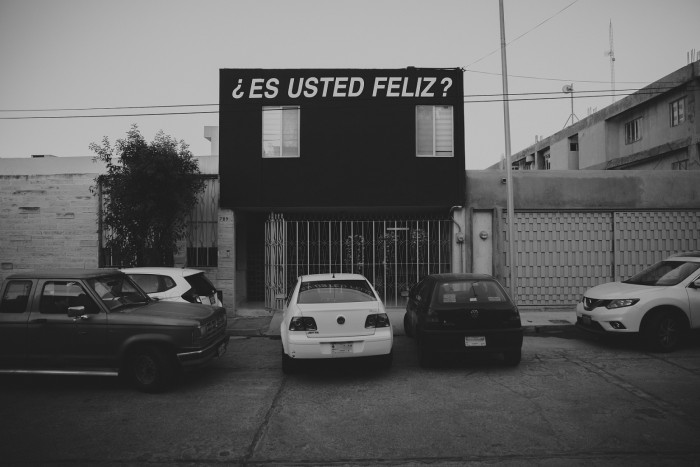
Certainly Lugar común is the Biennial’s biggest success, since it displaced the centrality of the contest, and the artwork-as-object, and moved toward current-day dynamics within communities. So it’s odd the outcomes from what happened in the house —also presented at the Centro de las Artes— consist of an exhibition where artists chose to show pieces in a classic museum display rather than making an effort to portray questions, problems, dialogue and processes. The good news is it’s very likely the Obispado house will continue to operate outside the Biennial framework, though with support from FEMSA.
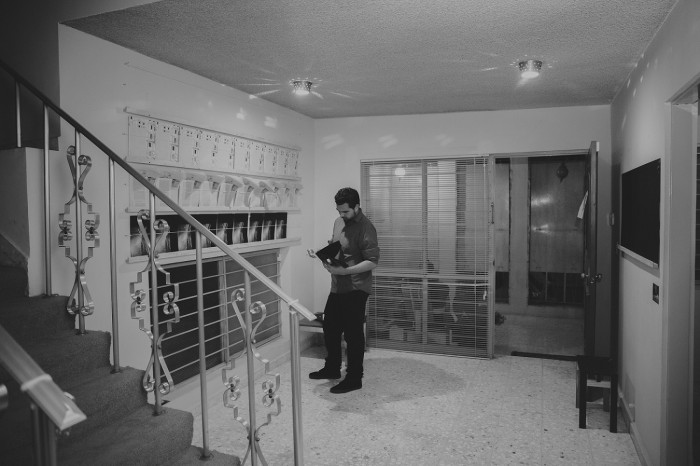
It’s important to mention both shows will be complemented by a public program entitled ¡Bienales!… ¿Cómo y para quién? (“Biennials!… How and for Whom?”) that will play host to conversations and conferences, with various specialists and curators, on how these major art shows have changed in recent decades, with an emphasis on case studies from Latin American biennials. This turn of events is noteworthy since its opens the door to always-welcome self-critique on the FEMSA Biennial’s purposes, limits and intentions.
Exhibitions will run till 22 January 2017 at the Centro de las Artes in Monterrey.
Notes:
[1] http://www.femsa.com/es/conoce-femsa/nuestro-origen/história. Consulted 16 October 2016.
Comments
There are no coments available.